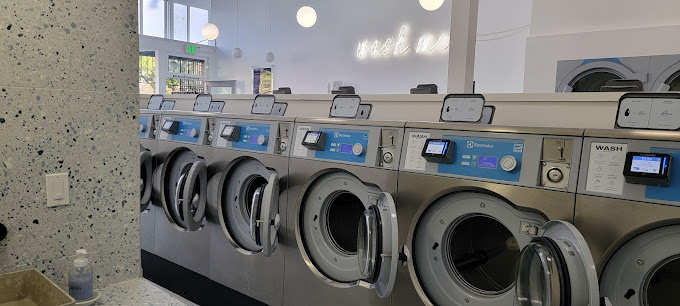Using virtual cards in conjunction with budgeting apps lets you take control of your finances effectively. You can create multiple virtual cards with customizable spending limits for different purposes. This setup enhances your budgeting by providing clear transaction histories and increased security for online transactions. Integrating virtual cards with your budgeting app allows real-time tracking and automatic expense categorization. Discover how to maximize your financial management and identify common pitfalls to avoid in the process.
Understanding Virtual Cards
Virtual cards are gaining traction as a savvy tool for managing your finances. These digital cards offer a range of virtual card features that enhance your spending experience. For instance, you can create multiple virtual cards for different purposes, making it easier to track expenses.
They often come with customizable spending limits, providing an additional layer of control over your budget.
When it comes to virtual card security, these cards are designed to protect your sensitive information. They generate unique card numbers for online transactions, reducing the risk of fraud.
Plus, many virtual cards allow you to set expiration dates, adding another safeguard. By understanding these features, you can harness the power of virtual cards to streamline your financial management effectively.
Benefits of Virtual Cards for Budgeting
Using virtual cards can significantly enhance your budgeting process. They offer several advantages that boost your budgeting efficiency:
- Controlled Spending: You can set specific limits for each virtual card, helping you stick to your budget.
- Transaction Tracking: Virtual cards provide clear transaction histories, making it easy to monitor your spending patterns.
- Enhanced Security: Since virtual cards generate unique numbers for each transaction, your financial information remains protected from fraud.
- Flexibility: You can create different cards for various categories, like groceries or entertainment, allowing for better expense management.
How Budgeting Apps Work
Budgeting apps help you track your spending habits by categorizing expenses and providing insights into your financial behavior.
They also allow you to set financial goals, making it easier to save for future needs.
Tracking Spending Habits
How can you effectively track your spending habits with budgeting apps? These tools help you analyze your financial habits and identify spending patterns, allowing you to make informed decisions.
Here’s how to leverage budgeting apps:
- Link Your Accounts: Connect your bank accounts and credit cards for real-time tracking.
- Categorize Expenses: Organize your spending into categories like groceries, entertainment, and bills.
- Set Spending Limits: Establish limits for each category to avoid overspending.
- Review Reports: Regularly check reports and insights to see where your money goes.
Setting Financial Goals
While you might be focused on tracking your spending, setting financial goals is equally crucial for a healthy financial future. Budgeting apps can help you clearly define your financial aspirations, whether it’s saving for a vacation, paying off debt, or building an emergency fund.
Start with specific, measurable targets, as this makes goal setting more achievable. Break larger goals into smaller milestones, so you can celebrate progress along the way. Many budgeting apps allow you to set up reminders and alerts to keep you on track.
Regularly review your goals and adjust them as needed, ensuring they remain aligned with your evolving financial situation. By integrating goal setting with your budgeting efforts, you’ll foster a more disciplined and motivated approach to your finances.
Analyzing Budget Performance
Analyzing budget performance is essential for understanding your financial habits and making informed decisions. By examining your budget variance and performance metrics, you can identify trends and areas for improvement.
Here are four key steps to effectively analyze your budget:
- Review Your Actual Spending: Compare it against your budgeted amounts to spot variances.
- Identify Trends: Look for consistent overspending or underspending in specific categories.
- Adjust Your Budget: Based on your findings, modify your budget to better align with your financial goals.
- Set Performance Metrics: Establish clear KPIs to track your progress over time.
Top Budgeting Apps to Consider
When it comes to managing your finances, choosing the right budgeting app can make all the difference. Several top options can enhance your financial literacy and support various budgeting strategies.
For example, Mint offers a comprehensive overview of your finances, helping you track spending effortlessly. YNAB (You Need A Budget) focuses on proactive budgeting, encouraging you to allocate every dollar effectively.
PocketGuard simplifies budget tracking by showing how much you can spend while still reaching your savings goals. Lastly, EveryDollar uses a zero-based budgeting approach, ensuring you account for every penny.
Each app provides unique features, so consider your specific needs to find the best fit for your financial management journey.
Integrating Virtual Cards With Budgeting Apps
Integrating virtual cards with budgeting apps can significantly enhance your financial tracking and spending control. By combining these tools, you can achieve a more organized approach to your finances.
Here are four key benefits of budgeting app integration with virtual cards:
- Increased Virtual Card Security: Protect your personal information with unique card numbers for each transaction.
- Real-time Tracking: Monitor your spending instantly, allowing for immediate adjustments to your budget.
- Categorized Expenses: Automatically categorize purchases, making it easier to analyze your spending habits.
- Spending Limits: Set specific limits on virtual cards to help you stick to your budget.
Setting Up Your Virtual Card
Setting up your virtual card is a straightforward process that can enhance your budgeting experience. First, choose a reputable provider that offers virtual cards.
After signing up, you’ll usually need to verify your identity and link your bank account. Once that’s done, you can generate your virtual card instantly.
Make sure to set spending limits or restrictions to align with your budget goals. It’s crucial to keep your card details secure, as you’ll use it for online purchases or subscriptions.
Regularly check your transactions via the associated app to stay on track. By efficiently setting up your virtual card, you can streamline your spending and gain better control over your finances.
Creating a Budget With Your App
Creating a budget with your app can be a game-changer for managing your finances effectively.
By utilizing your app, you can establish clear budget categories and make accurate expense forecasts. Here’s how to get started:
- Identify Your Income: Determine your total monthly income to understand your financial capacity.
- Set Budget Categories: Break down your spending into categories like groceries, entertainment, and savings.
- Estimate Expenses: Use historical data to forecast your expenses in each category.
- Adjust and Monitor: Regularly review and adjust your budget as needed to stay on track.
Tracking Your Spending Habits
As you dive into tracking your spending habits, it’s essential to understand the patterns that shape your financial decisions.
Start by categorizing your expenses into clear spending categories, such as groceries, entertainment, and utilities. This breakdown allows you to see where your money goes and identify areas for improvement.
Utilize expense tracking tools within your budgeting app to monitor these categories regularly. By doing so, you’ll gain insights into your spending behavior and can adjust your habits accordingly.
Consider setting spending limits for each category to reinforce better choices. The more you track, the more aware you become, enabling you to make informed decisions and ultimately take control of your finances.
Managing Subscriptions and Recurring Payments
Managing subscriptions and recurring payments can be a breeze with virtual cards.
You can easily track your recurring expenses and set spending limits for each subscription, ensuring you stay within your budget.
This way, you gain better control over your finances and avoid unwanted surprises at the end of the month.
Track Recurring Expenses Easily
Recurring expenses can quickly add up, leaving you with a tighter budget than you’d like. Effective expense management is crucial.
Here’s how you can track these expenses easily:
- Use Virtual Cards: Assign a virtual card for each subscription to monitor payments effortlessly.
- Budgeting Apps: Integrate your virtual cards with budgeting apps to get real-time updates.
- Set Reminders: Schedule notifications for upcoming payments to avoid surprises.
- Review Regularly: Monthly reviews help you identify unnecessary recurring expenses and adjust your budget accordingly.
Control Subscription Spending Limits
While subscription services offer convenience, they can also lead to unexpected overspending if not kept in check. To maintain control, utilize virtual cards for effective subscription management.
By creating a dedicated virtual card for each subscription, you can easily monitor spending and set limits. Many budgeting apps allow you to set spending alerts, notifying you when you approach your budget. This proactive approach helps prevent unnecessary charges and keeps your finances in line.
Regularly review your subscriptions; cancel those you no longer use or need. By actively managing your subscriptions and leveraging technology, you can enjoy the benefits of these services without falling into a financial trap.
Take control, and watch your spending habits improve.
Using Virtual Cards for Online Shopping
As online shopping continues to grow in popularity, using virtual cards has become an effective way to enhance your security and control over spending.
By implementing virtual cards, you can improve your virtual shopping security and set online spending limits. Here’s how to make the most of them:
- Create unique cards for different retailers to track spending easily.
- Set spending limits on each virtual card to avoid overspending.
- Monitor transactions closely through your budgeting app for better insights.
- Deactivate cards after purchases to prevent unauthorized use.
Enhancing Security With Virtual Cards
When you use virtual cards, you significantly boost your online security by creating a buffer between your bank account and potential cyber threats.
These cards offer enhanced privacy, allowing you to shop without exposing your actual card details. Instead of using your primary card, you can generate a unique virtual card for each transaction or merchant, minimizing the risk of data breaches.
This layer of anonymity helps protect your financial information from hackers. Additionally, virtual cards often come with built-in fraud protection features, alerting you to unauthorized transactions in real time.
Yellowdotpay: Your Gateway to Hassle-Free Global Payments
Yellowdotpay makes international transactions effortless with instant virtual credit cards, crypto top-up support (BTC, ETH, USDT), and 3D Secure protection. Whether you’re a freelancer, traveler, or business owner, our platform ensures seamless online payments for subscriptions, e-commerce, and global services without the need for a traditional bank account. With transparent pricing, fast activation, and worldwide acceptance, Yellowdotpay is the trusted choice for those who value security, flexibility, and borderless financial freedom.
Tips for Sticking to Your Budget
To stick to your budget, start by setting clear spending limits that align with your financial goals.
Regularly tracking your expenses helps you stay accountable and see where your money goes.
Don’t forget to adjust your budgets monthly to reflect any changes in your income or spending habits.
Set Clear Spending Limits
Setting clear spending limits is essential for effective budgeting, especially when using virtual cards. By establishing specific limits for each spending category, you can avoid overspending and make necessary budget adjustments.
Here are some tips to help you set those limits:
- Identify spending categories: Break down your expenses into categories like groceries, entertainment, and utilities.
- Set dollar amounts: Determine a realistic limit for each category based on your income and fixed expenses.
- Use virtual cards: Assign each category a separate virtual card to easily track spending.
- Review and adjust: Regularly assess your spending against these limits and make budget adjustments as needed to stay on track.
Track Expenses Regularly
Regularly tracking your expenses is crucial for sticking to your budget. By monitoring your spending, you can gain insights into your expense categories, helping you identify areas where you might overspend.
Utilize budgeting strategies that suit your lifestyle, such as setting aside specific amounts for each category and reviewing them weekly. This approach not only keeps you accountable but also allows you to adjust your spending habits in real-time.
Consider using budgeting apps that integrate with your virtual cards to streamline this process. They can automatically categorize your transactions, making it easier to visualize where your money goes.
Consistent tracking empowers you to make informed decisions, ensuring you stay on top of your financial goals.
Adjust Budgets Monthly
Tracking your expenses gives you a clear picture of your financial habits, which makes adjusting your budget each month a more effective process.
Monthly adjustments are crucial for maintaining budget flexibility. Here are some tips to help you stay on track:
- Review Spending: Analyze your expenses to identify patterns and areas for improvement.
- Set Realistic Goals: Adjust your budget based on your financial goals and lifestyle changes.
- Prioritize Needs vs. Wants: Distinguish between essential and non-essential expenses to allocate funds wisely.
- Use Virtual Cards: Leverage virtual cards for spending limits, ensuring you stick to your budget.
Analyzing Your Financial Progress
As you engage with budgeting apps, analyzing your financial progress becomes essential for making informed decisions.
Start by examining key financial metrics that reflect your spending habits and savings growth. Look for performance indicators like your income-to-expense ratio, which helps you understand how much money you’re allocating toward necessities versus discretionary spending.
Regularly review your spending patterns to identify areas where you can cut costs or adjust your budget. Tracking your progress over time allows you to set realistic financial goals and gauge improvements.
Use these insights to stay accountable and motivated, ensuring you’re on the right path toward financial stability.
Common Mistakes to Avoid
While budgeting apps can significantly enhance your financial management, common mistakes can derail your progress.
To maximize your budgeting experience and avoid common budgeting pitfalls, steer clear of these errors:
- Ignoring virtual card misconceptions: Understand that virtual cards aren’t just for online shopping; they can help you manage subscriptions and recurring payments.
- Not tracking all expenses: Failing to record every expense, even small ones, can lead to inaccurate budgeting.
- Setting unrealistic budgets: Overly ambitious goals can lead to frustration. Set achievable targets instead.
- Neglecting to adjust budgets: Life changes, so regularly review and tweak your budget to reflect your current situation.
Future Trends in Budgeting and Virtual Payments
The landscape of budgeting and virtual payments is evolving rapidly, driven by technological advancements and changing consumer behaviors.
You’ll likely see future payment trends leaning heavily towards integration with budgeting apps, making it easier to track expenses in real-time. Digital currency impact will play a significant role, as cryptocurrencies gain acceptance for everyday transactions, offering new budgeting strategies.
Expect features that allow seamless conversions between traditional and digital currencies, enhancing your financial flexibility. Moreover, artificial intelligence will personalize budgeting recommendations based on spending patterns, making it smarter and more efficient.
Embracing these trends will empower you to manage your finances better, ensuring you stay ahead in an increasingly digital world.
Conclusion
Incorporating virtual cards into your budgeting strategy can truly be a game changer. By seamlessly integrating these cards with budgeting apps, you can keep a tighter rein on your spending and avoid the pitfalls that derail many. Remember, it’s not just about saving money; it’s about making your finances work for you. As you navigate this digital landscape, keep your eyes on the prize and adapt to future trends that will further enhance your financial journey.


